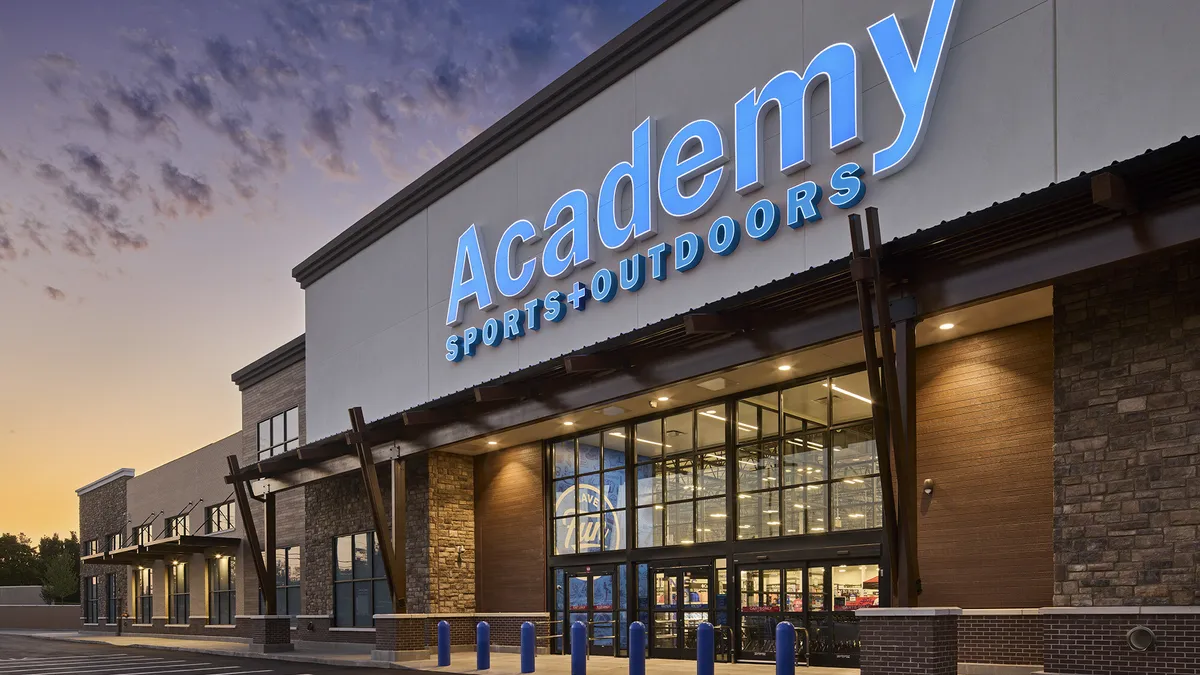One month after Hurricane Florence made landfall, and the Southern U.S. is still mucking out (and that was before Hurricane Michael hit last week).
The slow-moving Florence caused $38 billion in damage, according to Moody’s Analytics. It turned roads into rivers in North and South Carolina, throwing the supply chain — much needed for recovery — into chaos. North Carolina Ports in Wilmington and Morehead City closed for 11 days, and delivery issues jumped 50% as Florence hit.
"Anytime that roads are closed and things are delayed because you’re taking an alternate route that takes you an extra hour or two hours, then the whole system starts to get backed up," Kathy Fulton, executive director of the American Logistics Aid Network (ALAN), told Supply Chain Dive in an interview. "Those things start to escalate quickly."
Florence: An atypical storm
Hurricane Florence was not a typical hurricane — not like, to use a most recent example, Hurricane Michael. While an extremely powerful storm, Hurricane Michael made landfall and moved on, and most of the damage was from wind. With storms like Hurricane Michael, "the zone is relatively small in geographic area, focused on the core of the storm," Stephen Bennett, COO of Riskpulse, told Supply Chain Dive in an interview.
Instead, Hurricane Florence was more like 2017’s Hurricane Harvey, which made landfall and then stayed. "[Florence] basically moved inland, stalled out and stopped moving," Bennett said. In both cases, the storms dumped water on the region, with some areas in North Carolina receiving more than 30 inches of rain from Florence. The catastrophe zone was much larger because of widespread flooding.
That lead to the biggest challenge of recovering from this hurricane: infrastructure damaged and destroyed by flooding. "Businesses could not deliver via their normal routes," said Fulton.
"It’s still an experience based on each storm, but the technology is also learning storm to storm."

Stephen Bennett
COO Riskpulse
In some cases, stores or manufacturing plants were ready and open, but no one could get there – including employees and truck drivers.
The truck driver shortage already present on "blue sky" business days became an issue with Florence recovery too, Doug Baker, vice president of private brands for the Food Marketing Institute, told Supply Chain Dive in an interview. Not only were delivery routes lengthened because trucks had to find alternative routes when major corridors were closed, but also in the aftermath of a disaster, FEMA needs truck drivers too.
Agriculture suffers a $1.1B blow
The North Carolina Department of Agriculture and Consumer Services estimates that Florence caused $1.1 billion in damage specifically to the agriculture industry. Bennett said the most severe impacts were to farms raising hogs and poultry — about 5,500 swine were lost across the state.
Florence by the numbers
Damages
- $38 billion: Total damage from Florence
- $1.1 billion: Damage to North Carolina's agricultural industry
- $23.1 million: Damage to North Carolina's livestock, poultry and aquaculture
Livestock losses
- 4.1 million: Poultry losses
- 5,500: Hog losses
"These losses were caused by a combination of wind damage, power outage and floodwaters and were distributed across an area larger than the state of Massachusetts," Bennett said. "Farmers moved more than 20,000 pigs to higher ground before the storm, and this coordinated effort across the industry unquestionably reduced animal mortality in our industry."
That, of course, affects the supply chain. "Those items are inputs at the beginning of the supply chain, so [they] have potential ripple effects," Fulton said.
Sophisticated supply chains help recovery
Previous experience helped those along the supply chain know what worked and what didn’t in previous storms and could be applied to Florence, Baker said.
"The more as an industry that we can work with FEMA and explain to FEMA that we have all our ducks in a row and we have a plan in place, the less they have to do," he said. That includes communicating with FEMA about what grocery stores are open and stocked so that they don’t waste resources on a community where residents already have access to food.
He added that a grocery store being up and running can help a community feel like things are getting back to normal, and recover.
Fulton said North Carolina has a "really robust process for integration with the private sector, so they’re focused on getting business and industry restarted," which helped with recovery too, adding that the same is true for the state of Florida as it begins recovery from Hurricane Michael.
"Anytime that roads are closed and things are delayed ... then the whole system starts to get backed up."

Kathy Fulton
Executive Director, American Logistics Aid Network (ALAN)
"The supply chain as a whole is becoming much more sophisticated," said Bennett. "It’s still an experience based on each storm, but the technology is also learning storm to storm" like identifying store, plant and road closures and the amount of time to anticipate things being closed, effects on shippers, etc.
"Florence is just an evolution," Bennett added. "We are able to point back to Harvey and say, 'remember during Harvey, we used these sorts of metrics?' Then use the same type of metrics that you were used to seeing last year and apply it to your network to see how things might need to flow."
Fulton said that North Carolina has seen some "compounded impacts" due to Hurricane Michael, like power outages and flooding "but we are not seeing any significant lingering effects." Bennett said that their customers "are not observing any large-scale lingering impacts across their supply chains. Impacts are mostly localized at this point."
Baker said there’s always learning to be done from each storm, to do things better, faster and quicker. "I do believe that the area is responding, and communities are doing what they need to do to support each other, and retailers are getting back to business," he said. "I'm hopeful that Michael doesn’t go and take them 10 steps back from all the recovery they were able to accomplish over the last month."




















